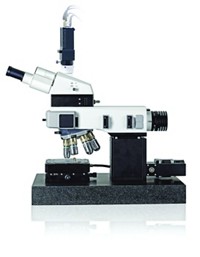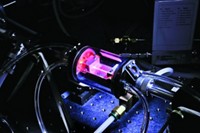Advertisement
Grab your lab coat. Let's get started
Welcome!
Welcome!
Create an account below to get 6 C&EN articles per month, receive newsletters and more - all free.
It seems this is your first time logging in online. Please enter the following information to continue.
As an ACS member you automatically get access to this site. All we need is few more details to create your reading experience.
Not you? Sign in with a different account.
Not you? Sign in with a different account.
ERROR 1
ERROR 1
ERROR 2
ERROR 2
ERROR 2
ERROR 2
ERROR 2
Password and Confirm password must match.
If you have an ACS member number, please enter it here so we can link this account to your membership. (optional)
ERROR 2
ACS values your privacy. By submitting your information, you are gaining access to C&EN and subscribing to our weekly newsletter. We use the information you provide to make your reading experience better, and we will never sell your data to third party members.
Physical Chemistry
Laser-Driven Chip Points To Mini Particle Accelerator
Electrons are accelerated in microchips at rates 10 times as high as conventional particle accelerators
by Stu Borman
October 7, 2013
| A version of this story appeared in
Volume 91, Issue 40
In coverage of a handheld atomic force microscope called the ezAFM in April, C&EN commented, “What’s next? An ezParticleAccelerator?” The question may not have been too far-fetched because Robert L. Byer of Stanford University and coworkers have now demonstrated a laser-driven microchip that could lead to a miniaturized particle accelerator (Nature 2013, DOI: 10.1038/nature12664). Such instruments could be accessible and inexpensive sources of attosecond tunable X-rays for medical diagnostics, biological and materials research, and industrial processing. Current accelerators use radio frequencies to speed up atomic particles and are among the largest and most expensive scientific facilities worldwide. Laser-based accelerators could be smaller and less expensive, but nobody had been able to demonstrate laser-induced particle acceleration in a microscale device. Now, the Stanford-based group has shown that pulsed infrared laser light can boost the speed of preaccelerated electrons in ridge-patterned micrometer-sized channels in silicon-based microchips. The laser acceleration is 10 times as high as that achieved by Stanford’s conventional SLAC accelerator. When optimized, such a laser system could match the accelerating power of SLAC’s 2-mile path in only about 100 feet, the researchers estimate.




Join the conversation
Contact the reporter
Submit a Letter to the Editor for publication
Engage with us on Twitter